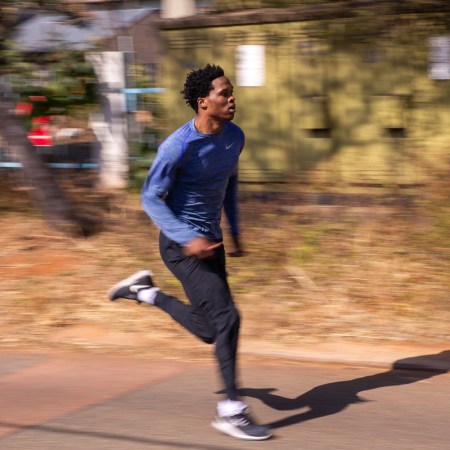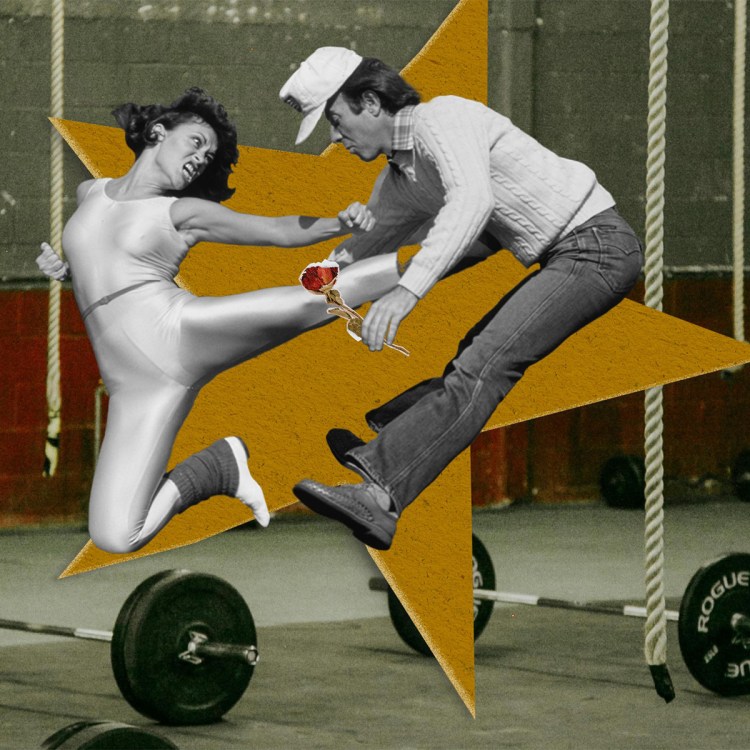Dig enough holes around your property, and you’ll find some crazy shit.
Like the remains of a New Deal-era fence post, or the answer to why a section of your driveway seems to be pushing upward like a volcanic archipelago (bamboo roots as thick as ropes, planted and abandoned by a previous homeowner), or, in the case of a British friend of mine, clay artifacts from the age of the Roman Empire, not far from where soldiers once erected a garrison known as Hadrian’s Wall.
It’s human nature during these bits of discovery to dig faster and broader, to grab a sledgehammer from the garage and hack away until you’ve fully unearthed the thing, however ordinary it may be. Why? Yardwork — be it treasure hunting, weeding or trimming hedges — is an example of “behavioral activation.” It’s a task with a clear end goal, which necessitates presence of mind. It’s almost impossible to explain to children, or those who couldn’t be bothered at all, but spending an entire Saturday moving mulch beds or clearing out gutters is something specific adults come to rely on, and even love.
I’ve recently started to understand. I have a backyard of my own now, full of its own special perils. Certain branches drop berries all summer, which attract unwanted squirrels and birds; after a heavy rain, the drain often clogs, and I’ve learned where to sweep pine needles to mitigate the damage. I’m also getting a little better at keeping plants alive. The process is irresistible in its own, strange way, compelling you to finish a finite task and make a piece of your property look nicer than it was before you walked outside.
It’s taxing, though. More than a couple times over the years, while planting Green Giant shrubs or pushing a ’90s Snapper back and forth across a lawn, I’ve stopped to catch my breath, wiped sweat from my neck and registered a calloused pain in my hands or a sharp jolt in my shoulders. It’s oddly easy to dismiss those feelings while working out in the yard — the hole isn’t going to dig itself, after all. So goes another hour of work, and another.
But where else do we challenge our bodies like this, and for so long? Where else do we push and pick up such awkwardly shaped items, many of them literally vibrating, without even warming up? If yardwork exhausts our bodies and muscles so much, should it be considered fitness? And if it’s a form of exercise, shouldn’t we have a better understanding of how to avoid injury while performing its movements every weekend the sun is out?
Ahead of months of afternoons in the yard, we reached out to a diverse panel of trainers, farmers and doctors to probe yardwork’s role in everyday fitness. Below, they offer up 13 rules of (green) thumb, riffing on metabolic equivalents, farmers’s carries and proper footwear. One thing that’s for certain: we could all stand to do a squat or two before throwing around a sledgehammer.
Gardening 101: A Comprehensive Guide to Getting Started
InsideHook connected with the pros to give you the best advice on how to grow your own produce this yearKnow the Science
“There’s good data for the effectiveness of yardwork and gardening as exercise. According to a 12.5-year study on non-exercise physical activity, men stand to benefit especially, with smaller waists, lower levels of potentially harmful blood fats, and lower glucose and insulin all at stake. Meanwhile, 19 articles in a meta-analysis showed excellent evidence for weight loss with gardening. Beyond fitness, yardwork has other benefits: even a few hours exercise in gardens can reduce depression and anxiety symptoms, along with a 36% reduction in the likelihood of dementia.” — Dr. John La Puma, board-certified internist, urban organic avocado farmer, author of New York Times best-selling REFUEL: A 24 Day Plan for Men to Lose Fat
Physical Therapists Use It as a Barometer
“Working outside can involve a great deal of exertion, depending on the task. In physical therapy, some providers use MET (metabolic equivalent) levels to assist patients in building strength and endurance. Therapists will actually turn to gardening to train their patients in tolerating more strenuous tasks. For example: ‘light effort’ is described as gardening with containers or raised beds, and scores a 2.3. ‘Light to moderate effort,’ such as pulling weeds, digging and collecting trash is a 3.5. And ‘heavy effort,’ like mowing the lawn, is a 5.0. Many other gardening and outdoor tasks also count as forms of casual exercise, including planting flowers, clearing brush, trimming bushes or branches, using a watering can to water flowers/plants, and harvesting large vegetable plants or fruit from trees.” — Brittany Ferri, OTR/L, CCTP, Founder at Simplicity of Health
“Yardwork Fitness” Comes in Various Forms
“Yardwork that comprises raking, mowing the lawn for at least 30 minutes, weeding and sweeping the patio are extensive cardiovascular workouts. They pump up your heartbeat, allowing you to break a sweat. Strengthening yardwork, meanwhile, involves lifting heavy pots or vases around, chopping wood, digging, and shoveling snow; these movements target bigger muscle groups like the core, upper body muscles and the thighs.” — Sadi Khan, third year medical student, fitness research analyst at RunRepeat.com
Don’t Skip the Warm-Up…
“When the body’s bending or stretching, it doesn’t know whether it’s pulling on a machine at a fancy health club or crouching down to pull some weeds. If it’s being made to work, it’ll experience the same physiological effects as a prescribed exercise movement. As such, people should warm up by walking or stretching before they do any yardwork. It would be wise also also do the lighter chores first, then moving on to tackling heavy tasks as moving bags of peat moss once the body has heated up.” — Robert Herbst, 19-time world champion powerlifter
Because You Can Definitely Hurt Yourself
“As a physical therapist, I often see people who’ve injured themselves after pushing too hard with yardwork, but practically no one looking to develop safer methods before they start. If you work out for an hour a day, don’t expect to be able to perform eight hours of hard labor. Injury prevention in the yardwork sphere gets essentially no attention at all. But this is a clear instance where “an ounce of prevention could be worth a pound of cure.” — Austin Misiura, DPT, OCS, CSCS, Co-Owner at Complex Health and Wellness
Broader Wellness Knowledge Can Only Help
“Avoid any muscular imbalances by performing backyard work in the kinetic alignment (keeping your head, shoulders, hips, knees, and feet aligned). Mastering the isometric squat would be beneficial for anyone who works in the backyard, since tasks such as weeding, planting and even deadheading mimic the movements needed for squat repetitions. In general, watch out for instances where you’re engaging the incorrect muscle groups; make sure to use the shoulders and proper core muscles (as opposed to the your upper trapezius muscles) when using a reaching tool for work higher than your head. Be mindful of your spine and avoid creating kyphosis (hunching) while mowing your lawn, moving pots, digging holes, or picking up heavy soil bags. Other movements to avoid performing outside would be: asymmetrical shifting, hip hiking, unnecessary internal or external rotation and improper mobility through your joints.” — Shaun Zetlin, Voted Best of Brooklyn’s Best Personal Trainer 2020, owner of Zetlin Fitness, author of Emotional Fitness
As Always, Breath Is Essential
“Work at a steady pace that matches your fitness. You can maximize how much exercise you get by minimizing the use of power tools. Regardless, breathing is essential throughout. All breathing should be in through your nose, out through your mouth — draw your breaths to your center and exhale using your lower abdominal muscles. Remember the four forms of breathing: in slowly, out slowly; in slowly, out quickly; in quickly, out slowly; in quickly; out quickly. Figure out what works for you to stay controlled and avoid hyperventilating while performing movements. You are breathing in energy and directing it as you exhale.” — Pablo Solomon, internationally recognized artist, award-winning designer, decades-long martial arts instructor, former science consultant with the U.S. Dept. of Education
Yardwork Isn’t a Substitution for Endurance Exercise
“I worked for a landscaper in high school and I know how hard it can be, but you have to consider whether working in the yard is enough to reach a particular fitness goal. The CDC says that each week, adults should engage in a total of 150 minutes of moderate-intensity aerobic exercise (like brisk walking) and 75 minutes per week of a high-intensity workout (like jogging or running). To stay fit you have to get your heart rate up, so you’d have to make sure to move with a sense of urgency.” — Jamie Hickey, founder of Truism Fitness
This Isn’t Strength Training, Either
“Yardwork definitely counts as physical activity, but it isn’t a structured set of movements. You’re lacking essential elements such as sets, reps, work/rest ratio and metrics for assessing work volume or gains in fitness level. That said, you can absolutely burn a ton of calories and become more physically fit by doing work in the backyard. It’s a great way to stay functionally mobile, with movements such as getting up and down (from a kneeling or squatting position), lifting from the floor, and carrying sometimes super heavy materials. The best bet for landscaping practice counting as exercise: carries of a specific distance. ‘Farmer’s carries’ are important for functional strength, and involved carrying one or two kettlebells by your side for a certain distance — let’s say 30 feet. Just make sure to perform it with a similar weight, over the same distance, repeatedly, with similar rest between carries.” — Misiura
Know When to Take a Break
“When sitting or kneeling for long periods of time, use pads to protect your knees. When doing overhead work (trimming branches or bushes) for a prolonged period of time, take a break at least every 10 minutes to avoid straining muscles or compressing nerves. When using a riding or push mower (especially when mowing large areas), avoid keeping the same posture for too long. A push mower can cause cumulative overuse and pain in the hands due to the vibrations, while a riding mower can cause back pain, especially if people slouch or assume awkward and uncomfortable positions. Breaks are crucial.” — Ferri
Don’t Be a Hero
“Ask for help when moving heavy objects, and make sure you’re using proper lifting mechanics. Bend through your knees, pull your shoulders back, and protect your low back by keeping items close to your body.” — Dr. Mary Kate Casey, DPT Founder/Owner of PREP Performance Center
Equipment Matters
“No matter what you’re doing — hand-weeding, lifting bags of mulch or pulling garden carts — you need the right equipment to protect yourself from injury. Invest in a good pair of gloves, use sharp tools, wear a visor or goggles when operating electric equipment, and pick up a pair of sturdy (not athletic!) shoes or boots.” — Dr. La Puma
The Rewards Are Metaphysical, Not Just Physical
“Working in your yard has the added benefits of sunshine, fresh air and a Zen connection with Nature. It’s something that might increase the value of your property and an opportunity to grow your own food organically. — Solomon
The Charge will help you move better, think clearer and stay in the game longer. Subscribe to our wellness newsletter today.


























